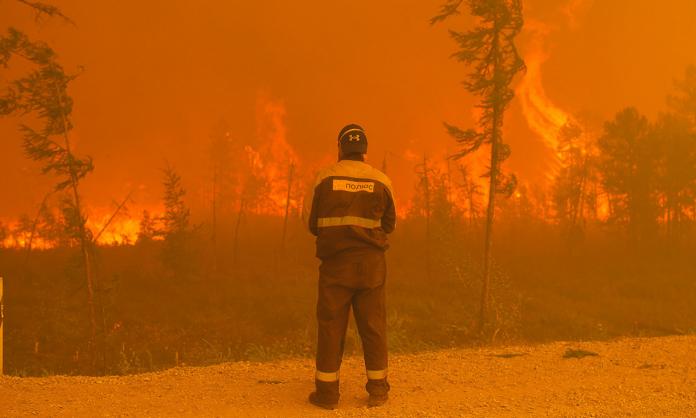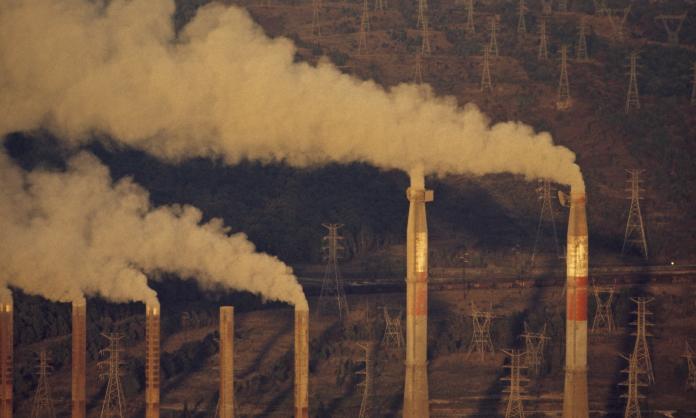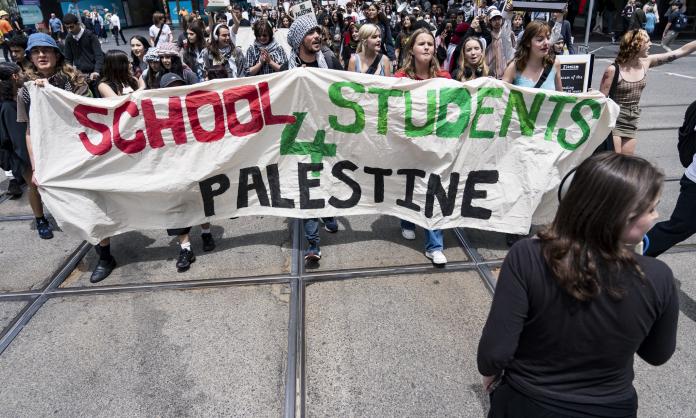A “wake up call”, an “alarm bell”, a “code red for humanity”, and “the starkest warning yet”—these are among the most common terms used to describe the findings of the United Nations Intergovernmental Panel on Climate Change’s (IPCC) latest major report. Since the report’s release on 9 August there’s been a steady stream of articles pointing out (once again) that we can no longer afford to ignore the science—if the world fails to rapidly reduce emissions, we’re headed for disaster.
The report—the product of the collaborative effort of 234 scientists from 66 countries who between them drew on 14,000 peer-reviewed studies—certainly makes for some bracing reading. No one, however, who has been paying attention to climate science in recent years will have found anything completely shocking and new. What’s most novel, perhaps, is the increased sense of certainty about what we’re seeing, and what we can expect to see in the coming years and decades.
One of the report’s most headline-grabbing findings is that it’s now very likely impossible for us to limit warming to below the 1.5 degrees Celsius level that many scientists regard as “safe”. Even if global greenhouse gas emissions begin to fall steeply from today, we will still break through the 1.5 degree barrier sometime in the 2030s. If, as is almost certain, we fail to cut emissions as rapidly as projected in the most optimistic scenarios considered, then by the middle of the century the temperature rise will have pushed through 2 degrees and could end up as high as 5.7 degrees above the pre-industrial era average by 2100.
Even at 1 degree warmer, which is where we are today, we can already see the impact. In the past few months there have been a series of “once in a thousand year” weather extremes. Large swathes of the northern hemisphere—from the northwest of North America, through southern Europe, and across into Siberia—have been ravaged by drought, record-smashing heat, and devastating fires. Meanwhile, other parts of the world—such as Germany, China, India, and Japan—were hit by extreme rainfall and flooding. In Turkey, flash flooding in the north killed at least 59 people less than a week after southern Turkey was dealing with devastating bushfires.
If there’s one main take away from the report, it’s that no matter what happens from here, we’re going to see much more of this, and worse, for at least the next few decades. And very likely, given the failure so far to cut greenhouse gas emissions at all, never mind at the rate required to avoid warming over 2 degrees, the second half of the century will be worse again. Death and destruction on a vast scale are already locked in, and if we want to avoid a situation in which the lives and livelihoods of hundreds of millions, if not billions of people are threatened, we need to change course very soon.
It’s true, then, that this new report is a “wake up call”. But it would be fatal for the climate movement (and by extension, for humanity), to think this call is likely to be heeded. There have been many such calls, alarms, stark warnings, and “code reds” in the past few decades. And if despite all the reports, and despite the mounting scale of destruction we’re seeing around the world, our leaders still aren’t awake, we might wonder whether yet another warning from scientists, however authoritative and however alarming it may be, will be enough to rouse them.
More likely they’ll do what they usually do: wait for the flurry of media to die-down, then press “snooze” again and hope it’s a few more years at least until humanity’s next major climate “wake up call”. This might seem like a very irrational way to behave. But when you look at things from the perspective of the global capitalist ruling class and the politicians who serve them, it makes sense. Their immense wealth and power was built off the fossil fuel hungry system as it exists today, and they doubtless feel (legitimately) that any radical change to the status quo will be counter to their interests.
At the same time, as we’ve seen again and again when disasters have struck, the same wealth and power can be used by the ruling class to protect themselves from the worst impacts of climate change. They’re not the ones who are going to bear the brunt of the increased frequency and intensity of heatwaves, fires and floods. In a worst case scenario they will be able to retreat to well protected enclaves or bunkers in New Zealand and other remote and temperate parts of the world. Some of them are actively planning for this already.
Many have pointed out that the IPCC has given us some reason to be hopeful. If we can succeed in bringing emissions down by 45 percent from 2010 levels by 2030, and to zero by 2050 at latest, then we have a good chance of limiting warming to around 1.5 degrees. But if the long history of failure in this area tells us anything, it’s that we can’t rely on our existing leaders to get us there.
Australia’s coal fondling Prime Minister Scott Morrison has already made his stance clear. Not only did he fail to indicate any inclination at all to begin the process of dismantling Australia’s “world leading” fossil fuel economy, he acted as if the country’s completely pathetic and token emissions reduction efforts to date were something worth celebrating. Meanwhile, he sought to deflect the blame for rising emissions onto others, saying “we cannot ignore the fact that the developing world accounts for two-thirds of global emissions”, and offered up the prospect of future “technology breakthroughs” as an alternative to making the kind of rapid emissions cuts the IPCC sees as necessary. We can, unfortunately, expect little better from the Labor Party.
Our one real hope remains to form a movement powerful enough either to force them to act or, if that fails, to sweep them aside and begin the task of repairing the damage and building a better world ourselves.











